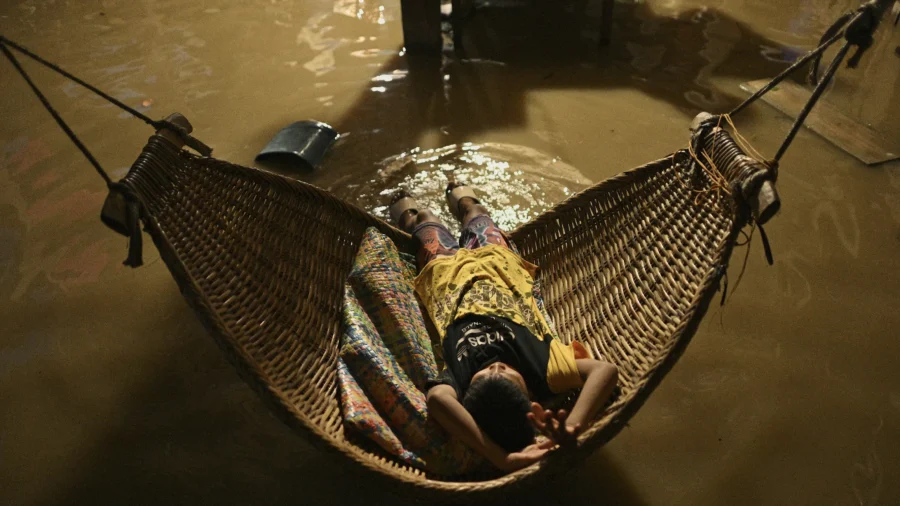MANILA, Philippines—A new typhoon barreled across an agricultural region in the northeastern Philippines on Monday after thousands were evacuated to safety while still struggling to recover from the devastation caused by three successive storms in the last three weeks.
Typhoon Toraji slammed into northeastern Aurora Province and was forecast to blow over the mountainous Luzon region, where President Ferdinand Marcos Jr.—just the day before—inspected the damage from the last storm and led the distribution of food packs to residents in Cagayan and Ilocos Provinces. Marcos skipped this week’s Asia-Pacific Cooperation forum in Peru to oversee recovery efforts from back-to-back storms.
After making landfall in Aurora on Monday morning with sustained winds of up to 81 miles per hour and gusts of up to 112 mph, the typhoon was expected to barrel northwestward across Luzon, weaken as it crosses a mountain range and then blow into the South China Sea.
Interior Secretary Jonvic Remulla on Sunday ordered the forcible evacuation of people in 2,500 villages expected to be lashed by Toraji, locally named Nika, warning that the rain-soaked Luzon mountains, valleys, and plains were more susceptible to flash floods and landslides. With the typhoon approaching fast, there was little time to move large numbers of people to safety, he said.
“We understand if some would want to stay, but we have to get them out,” Remulla told reporters.
The military said its disaster-response forces have been deployed near high-risk areas and were standing by for new contingencies. It added that it suspended combat drills in the north due to the weather.
“Our commitment remains steadfast in safeguarding and assisting our countrymen specially in times of disaster,” Armed Forces of the Philippines spokesperson Col. Francel Margareth Padilla said.
Schools were shut down, inter-island ferry services and domestic flights were suspended in provinces in or near the path of the typhoon, the 14th weather disturbance to batter the Philippine archipelago this year. Forecasters said they were monitoring another brewing storm in the Pacific that could affect the country if it strengthens.
The last two typhoons and a tropical storm caused more than 160 deaths, damaged thousands of houses and farmlands, and affected more than 9 million people, including hundreds of thousands who fled to emergency shelters, after dumping from one to two months’ worth of rain in just 24 hours in some cities and towns.
Overwhelmed, the Philippines received help from Southeast Asian countries led by Singapore, along with longtime treaty ally the United States, to transport food, water, and other aid to hard-hit northern provinces.
The Philippine archipelago is often battered by typhoons and earthquakes and has more than a dozen active volcanoes, making it one of the most natural disaster-prone countries in the world.
In 2013, Typhoon Haiyan, one of the strongest recorded tropical cyclones, left more than 7,300 people dead or missing, flattened entire villages and caused ships to run aground and smash into houses in the central Philippines.
By Jim Gomez

